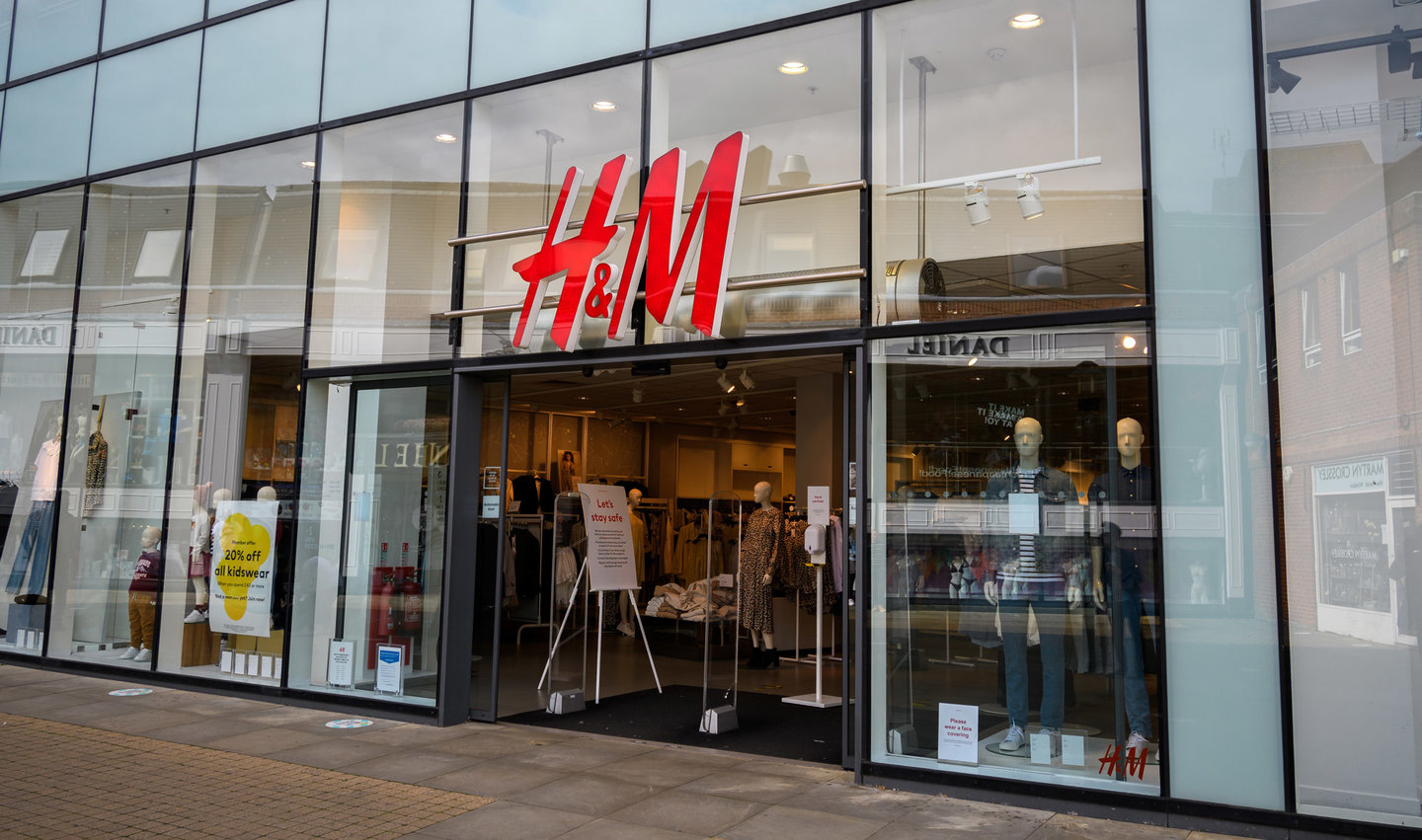Feature
Are fashion brands on track with ESG goals?
The pursuit of environmental, social and governance (ESG) goals has become paramount – but are fashion brands achieving them? Diana Yordanova reports.

Most ESG investment and mobilisation is yet to happen. Credit: Robert Hoetink/Shutterstock
Major players in the industry, from fast fashion giants such as Shein to legacy brands such as C&A, are making strides to align their operations with sustainability principles. However, the journey is fraught with challenges and complexities.
Shein, often criticised for its successful fast fashion model, is now calling itself a “disruptor in the market”, contesting the view that the ecommerce firm is a consumer-sensitive consumption machine.
Shein cuts waste to 1%
Jakub Hera Adamowicz, the company’s head of Brussels media and communications, stressed that unlike traditional fashion companies, where up to 40% of produced clothes go unsold, Shein’s waste rate is around 1%. This efficiency is achieved through a highly digitalised supply chain and the strategic use of social media influencers to forecast demand. "If a specific shirt has a lot of demand, we can anticipate it and quickly produce the necessary amount and transport it to the consumer," he explained stressing that this strategy allows the company to anticipate demand and produce efficiently while reducing waste. According to him, a digital approach has helped the company to reduce complexity and material usage, which is why Shein has grown so quickly. Plus, Shein now also operates a scheme where consumers can resell used clothes.

Kuala Lumpur, Malaysia. Credit: Uskarp/Shutterstock
C&A reduces GHG emissions by third
C&A, a stalwart in Europe’s fashion industry, has also made progress in its ESG goals, particularly focusing on environmental sustainability and greenhouse gas (GHG) reductions. Its 2022 annual report shows that the company achieved a 32% reduction in GHG emissions that year compared to its 2018 baseline, surpassing its 2028 target ahead of schedule. However, the report also points out that the reduction is “largely based on effects of the pandemic and not on significant changes in the supply chain.”
Flavia Ballve, external affairs southern Europe at C&A shared that “even the [company’s Dutch] founding fathers, Clemens and August, built their business with the intention of offering durable, high-quality, and responsibly produced clothing that was still affordable."

Dusseldorf, North Rhine-Westphalia. Credit: nitpicker/Shutterstock
C&A’s proactive approach has extended to waste reduction and water stewardship. In 2022, the company recycled 10,672 tonnes of paper and 756 tonnes of foil from its distribution centres. It now aims to replace 100% of consumer-facing virgin plastic with recycled alternatives by 2028.
H&M focuses on circular transformation
Sweden’s Hennes & Mauritz (H&M) is another major player that has been striving to convince regulators it is making significant strides in ESG initiatives. The company spent Swedish Krona SEK2.1bn ($195m) on using recycled and sustainably sourced materials in 2023. Its efforts reduced its direct and indirect scope 1 and 2 greenhouse gas GHG emissions by 24% and scope 3 value chain emissions by 22% compared to 2019 levels.

Windsor, United Kingdom. Credit: Roger Utting/Shutterstock
A spokesperson from H&M Group highlighted the company's commitment to transformation: "As a global fashion company, we have a big role to play in changing the way fashion is produced and consumed. That is why we are transforming our business towards circularity and achieving net-zero emissions, while being a fair and equal company."
H&M's initiatives include launching the Looper Textile Co promoting garment reuse and recycling, while funding an offshore wind power project in Bangladesh.
Primark focuses on recycled materials
Rosie Shepard, external communications officer at global fashion retailer Primark stated the fast-fashion brand is making “some big changes” to the way it makes its clothes, including a goal that by 2030, 100% of Primark’s clothes will be made using recycled or more sustainably sourced materials.

Shrewsbury, Shropshire, UK. Credit: Wozzie/Shutterstock
Primark, under its Primark Cares strategy, is committed to reducing its environmental impact. Launched in 2021, the strategy builds on 15 years of work in this space. "We’re committed to being transparent about where the challenges are, as well as where we’re demonstrating progress," Shepard noted with the company publishing an annual report on its sustainability progress.
Creating a holistic view of sustainability
Despite these advances towards fashion sector sustainability, the path to achieving ESG goals is not without obstacles. Mauro Scalia, industry association Euratex director of sustainable businesses, noted that "companies' footprints vary a lot based on where they are in production.
Cutting CO2 emissions is one of many aspects, but it may not be the main one for most."
Scalia underscored the importance of a holistic approach towards sustainability, encompassing working conditions, transparency, chemicals, waste prevention and resource reuse.
Consumer demand for sustainable products, while growing, remains a partial driver: "Most consumers still choose garments based on price, comfort, aesthetic, or functionality," Scalia explained. This economic reality presents a critical challenge for companies trying to balance sustainability with affordability.
Furthermore, the risk of greenwashing looms large with Scalia underlining that companies continuously try to communicate their effort and improvements, also to show why certain products may have more realistic pricing than others. According to him, the Euratex network expects legislation in the European Union (EU) and elsewhere against greenwashing to tighten in the coming years.
Most importantly, he anticipates an agreed harmonised methodology to calculate products LCA (product life cycle assessments): "There's a certain awareness of upcoming legal obligations in the EU,” he said, highlighting legislation on due diligence, corporate sustainability reporting, ecodesign rules for sustainable products and extended producer responsibility). However, “while some companies are already taking actions, the bulk of the investment and mobilisation is yet to happen," he concluded.
Since February 2022, landmines have inflicted 1,671 casualties, killing 491 people and injuring a further 1,166, according to research from the Halo Trust shown to Army Technology.
This has turned eastern Ukraine into “the most heavily mined region of the planet right now”, Wilson Jones, defence analyst at GlobalData, tells Army Technology. “And of course, landmines primarily kill civilians – disproportionately children.”
Both sides have used landmines to devastating ecological effect.
In April 2022, Ukrainian troops blew up the floodgates for the Oskil reservoir dam, releasing more than 350m3 of water to slow Russia’s advance across the Donets River.
This caused water levels to dip drastically, exposing the reservoir’s bed and causing local wells to dry up. Birds that once nested in the Oskil disappeared, and around two million fish are estimated to have died.
While Russian forces are suspected of finishing the demolition job on the Oskil dam as Ukraine’s counteroffensive advanced later that year, Moscow’s targeting of the Nova Kakhovka dam in June 2023 has been confirmed by investigations.
Russian operatives are suspected to have set charges inside the Nova Kakhovka, one of the biggest water reservoirs in Europe.
Water flooded dozens of towns and villages in the surrounding areas, causing thousands of people to flee. At least 59 people drowned – although an AP investigation says hundreds of deaths were covered up.
The dam’s destruction also “impacted the Black Sea’s ecosystem”, according to Jones. “Millions of tons of water were expelled into the sea, likely contaminated with pesticides and agricultural waste, fuel, trash, plus silt and dirt swept up in the rapids, which affects ocean life,” he says.